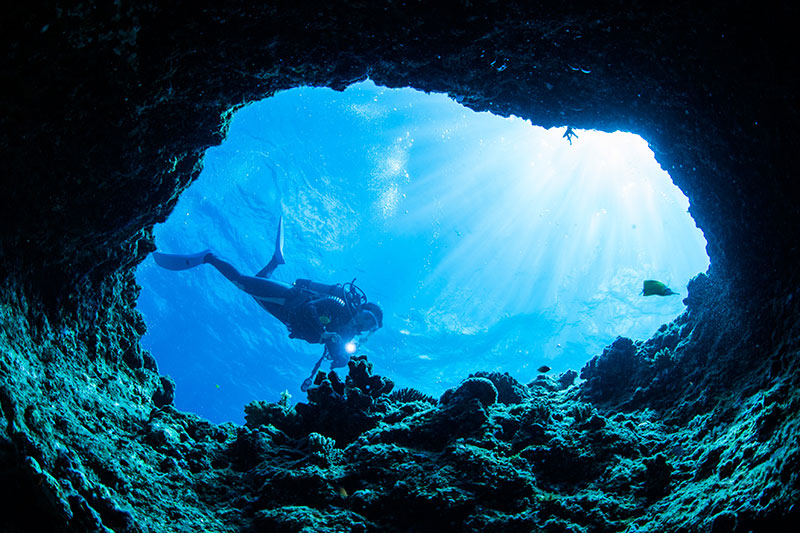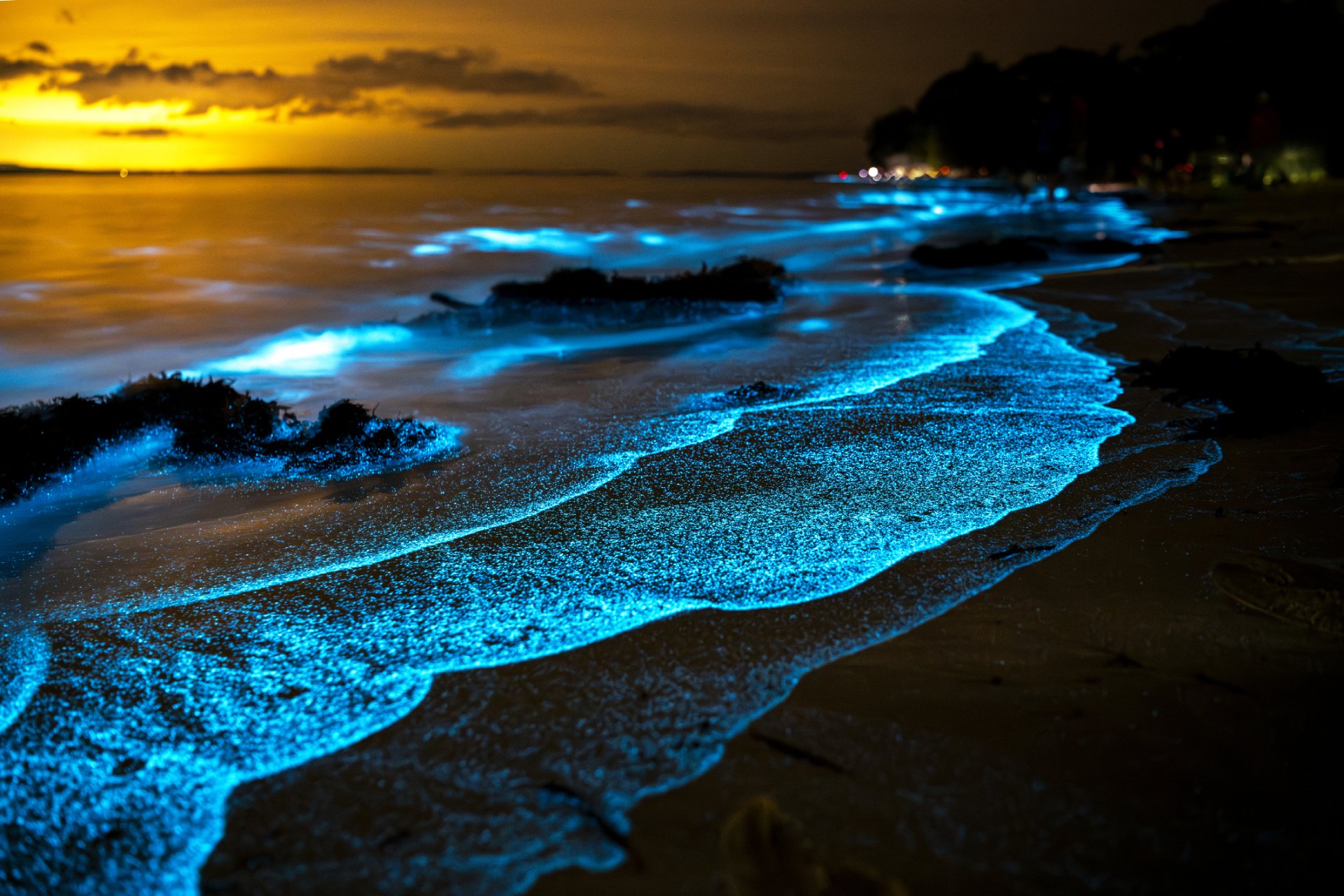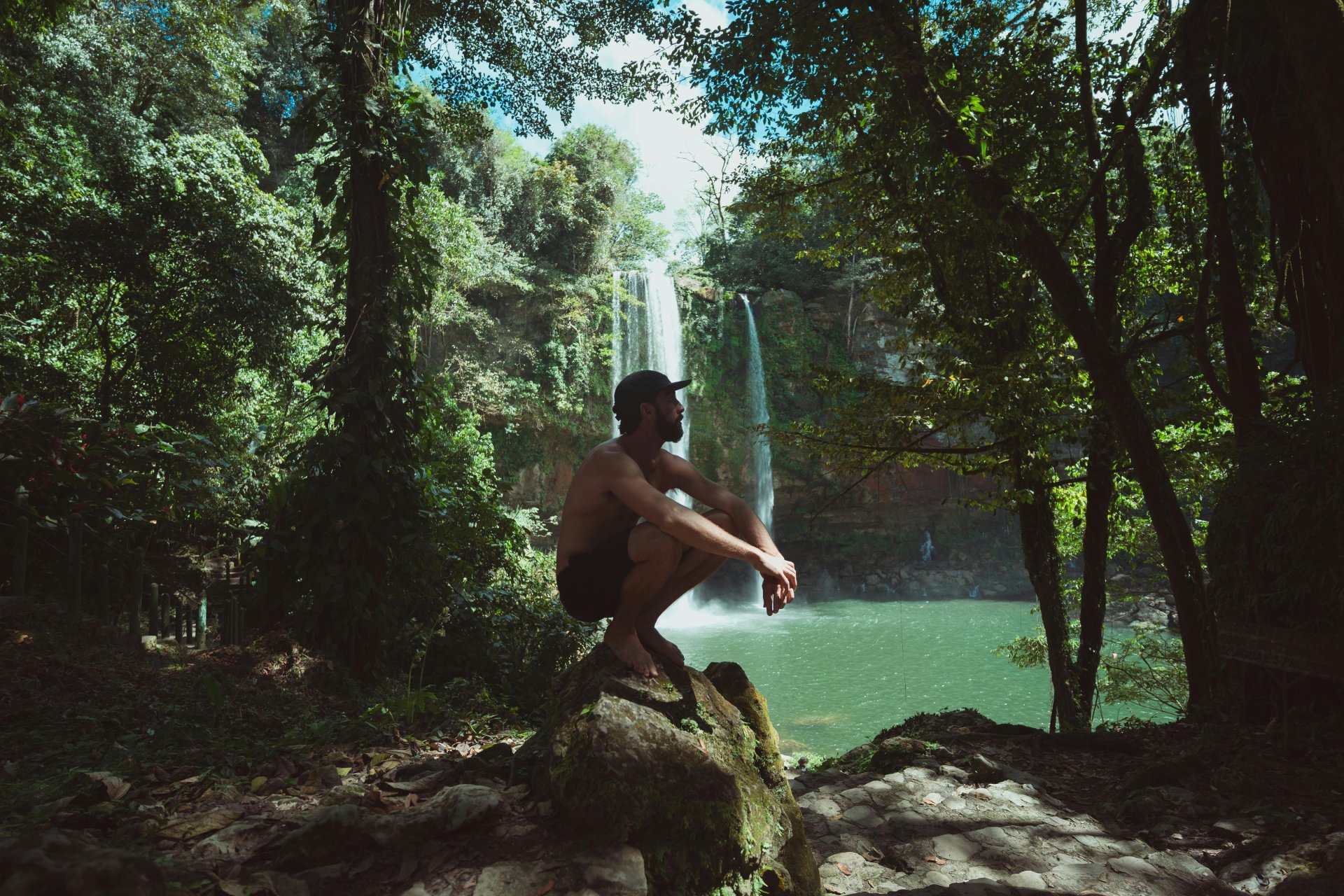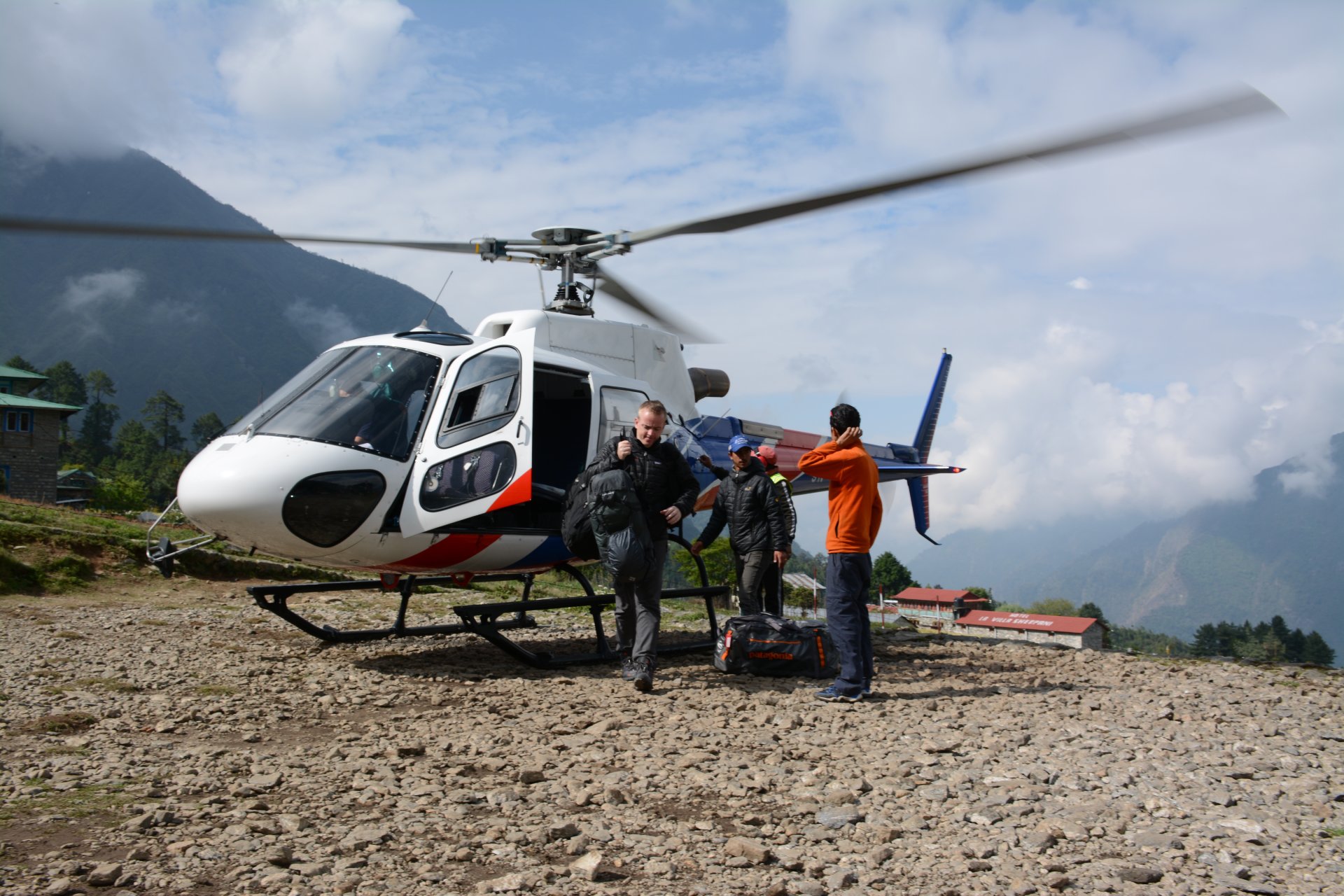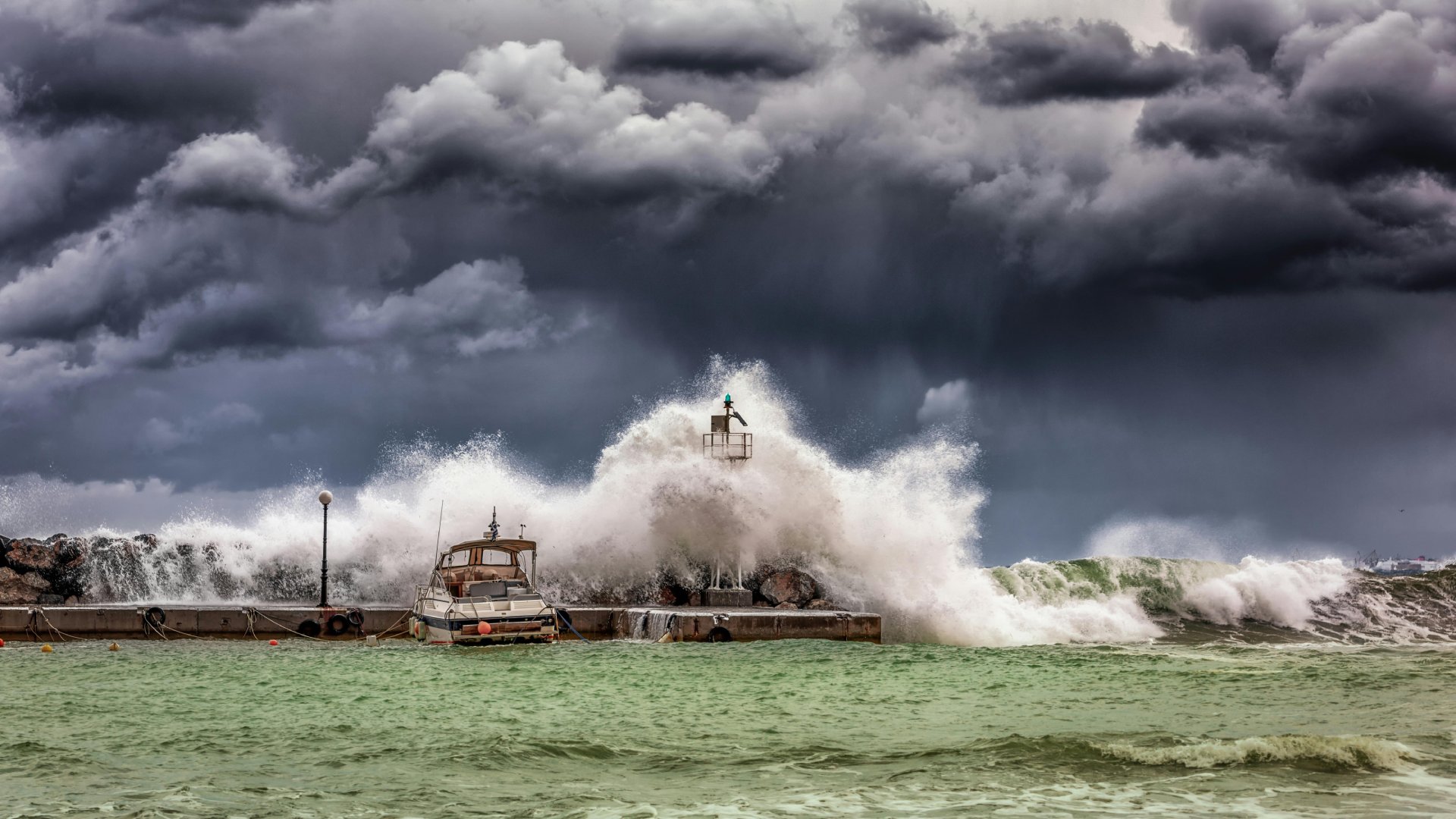Best Cave Diving Trips and Safety Tips is part of the Global Rescue “No Restrictions” series, where we take a look at extreme sports and activities that many of our members have taken part in, or plan to. Unlike other providers, Global Rescue memberships do not exclude or restrict adventure activities, whether cave diving, sky diving, heli-skiing, BASE jumping and beyond.
Submerged iceberg caves in Antarctica. Underwater lava tubes in Hawaii. Bone-filled subaquatic tunnels of limestone in Zimbabwe. Accessing these, and many other, undersea treasures requires the adventurously curious to go cave diving — or underwater diving in water-filled caves and tunnels.
Long-time Global Rescue member John A. Kerechek dove a few of Hawaii’s lava tubes in the past. “I was interested in becoming cave diver certified,” he said. A lava tube forms when lava flow cools and hardens on the surface the while inside the lava keeps flowing at 2,192°F/1,200°C. When the volcano eruption stops so does the lava flow, leaving a hardened, underwater tube. Lava tubes can be seen on land and underwater in the Hawaiian Islands.
Popular lava tube dives — like Black Point, Frog Rock and Lava Dome — are on the northwest tip of the big island of Hawaii along the Kohala Coast.
“The west coast provides all the dive action you need for a wide variety of experiences, from colorful swim-throughs to fascinating lava tubes. The lava formations are, for the most part, blanketed in brilliant red and orange encrusting sponges,” said Kathryn Curzon, a freelance dive travel writer and award-winning author.
Hollywood consultant, documentary producer and author Jill Heinerth is one of the world’s most famous subsurface cave explorers. Her deep-water cave diving includes going below Antarctic icebergs, under the Sahara Desert and reaching the deepest subaquatic caves in Bermuda. She has recorded dive depths of 459 feet/140 meters, more than three times the depth limits for recreational divers.
Heinerth’s motivation goes beyond recreational enjoyment, rather she seeks to explore something meaningful to humankind. “I often work with scientists on important projects looking at issues such as climate change or evolution or survival of uniquely adapted animal species,” she said.
Whether you’re looking to combine an extreme sport with travel, or discover nature few others have seen, or connecting with scientific investigation, cave diving is an exciting option with lots of opportunities — if you’re willing to prepare and plan for it.
Skill Sets Needed
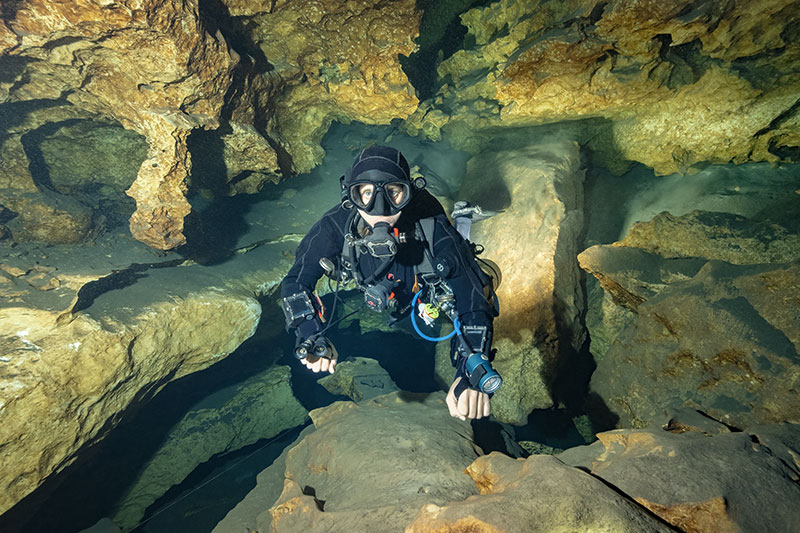
“It takes much more than an adventurous spirit and curiosity to go cave diving, even if you are an experienced open-water scuba diver. A specific pathway of necessary skills and demonstrated experience requirements must be met before scuba diving in a cave,” said Harding Bush, a former Navy SEAL and associate manager operations for Global Rescue, the leading provider of medical, security, evacuation and travel risk management services.
Bush says these qualifications include advanced open water diver, night diver and cavern diver. “The cavern diving certification is a stepping stone to cave diving. The cavern diver certification allows divers to enter a cave with an overhead environment but only within sight of the cave entrance and unobstructed access to the surface,” he said.
To become a cavern diver, the diver must demonstrate cave diving skills in an open environment over several dives supervised by a qualified instructor. The cavern diver qualification is available from conventional diving education certifying organizations such as the National Association of Underwater Instructors (NAUI) and the Professional Association of Diving Instructors (PADI).
[Related Reading: Are You Rescue Ready?]
“Cave diving is classified as technical diving as opposed to recreational or sport diving and requires certification through specific cave diving organizations. Cave diving also requires different and specific equipment from conventional sport diving equipment,” Bush added.
As many popular cave diving areas are in freshwater lakes, there may be additional decompression requirements due to the elevation of the lake that requires the diver to use altitude diving decompression tables for an elevation above 300 meters.
The unique procedures of cave diving mainly emphasize navigation, gas (air supply) management, and performing in restricted areas. Underwater caves and tunnels physically hold divers back from direct ascent to the surface during much of the dive, making exiting a dive more challenging and dangerous.
Most open-water diving skills — like the ability to use a Self-Contained Underwater Breathing Apparatus (a scuba set) — are needed for cave diving. Additional skills, like buoyancy, navigating in darkness, and using guidelines are essential. Cave divers also need emergency competencies for recovering from air supply (gas) problems while in tight spaces with limited visibility.
Special Equipment & Gear for the Cave Diver
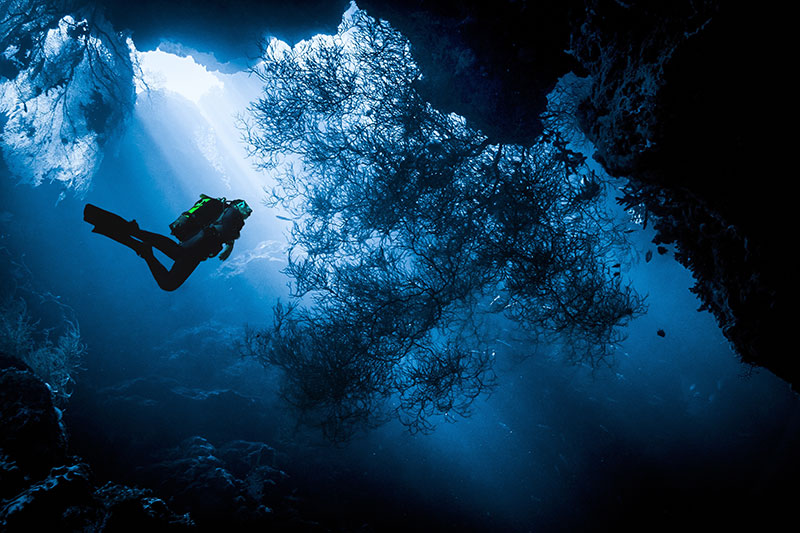
Cave diving equipment includes standard recreational scuba configurations but may also require specialized gear.
Side-mount harnesses are scuba sets mounted alongside the diver, instead of on their back, to permit greater movement. Rebreathers recycle exhaled air and help extend dive duration. Scooters, or diver propulsion vehicles, can extend the dive range by easing the workload on the diver, allowing speedier travel in open sections of the cave or tunnel.
The Good Divers Always Live — a Motto for Survival
Cave divers follow five rules.
- Training. Cave diving is taught in successively complex stages with each reinforced with cave diving experience to hone skills and avoid panic.
- Guideline Proficiency. Using a continuous line (also called a distance line, penetration line or cave line) made of nylon or polypropylene is used by divers as a means to return to safety, especially when conditions include low visibility, water currents or difficult navigation.
- Dive Depth. The depth any diver can dive to is limited by decompression requirements. Cave divers also need to manage time for an emergency contingency more so than sport divers, this further limits the total time of the dive. Other considerations such as gas consumption and the effects of nitrogen narcosis must also be considered as the depth of a dive increases. Divers should also always consider the proximity of a recompression chamber and the quality of local emergency services while planning a dive.
- Air or Breathing Gas Management. The most common protocol is the “rule of thirds” in which one-third of the initial gas supply is used for going in, one-third for coming back, and one-third in the case of an emergency. The purpose of gas planning is to ensure the diver has sufficient breathing gas to return safely to a place where more breathing gas is available, usually the surface.
- Light. Each cave diver carries three light sources. A primary light for exploration with enough power to last at least as long as the planned dive. The other two are backup lights for emergencies.
Divers remember the five rules using the prompt: “The Good Divers Always Live” with the initial letter of each word stands for Training, Guide, Depth, Air and Light.
Cave Diving Destinations Near and Far
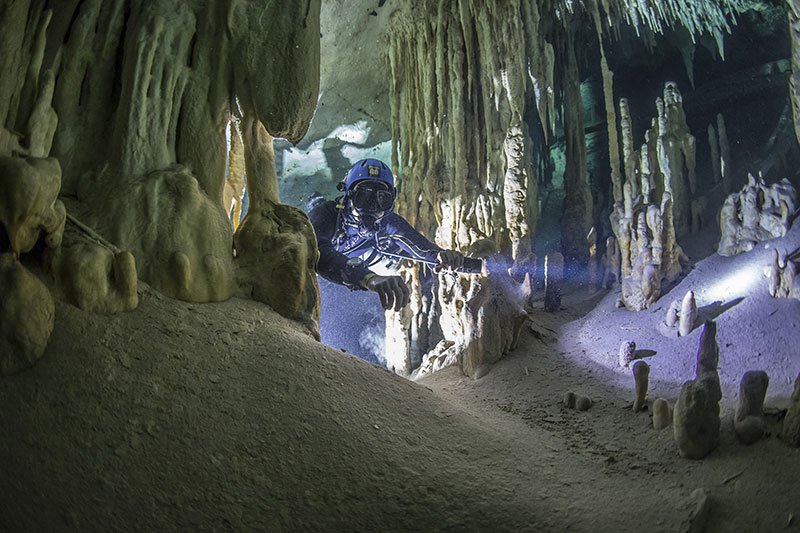
Cave diving opportunities are all over the world. Here are a few to consider as you think about and prepare for a cave diving adventure.
- Cenote Angelita — Tulum, Mexico — One of the thousands of cenotes — a natural sinkhole resulting from the collapse of limestone bedrock that exposes groundwater — associated with the Yucatán Peninsula of Mexico. Cenotes were commonly used for water supplies by the ancient Maya, and occasionally for sacrificial offerings. Cenote Angelita mystifies cave divers with its layer of hydrogen sulfate, a cloudy substance that separates incredibly clear freshwater from the saltwater below at approximately 100 feet (30 meters). Required Certification: Advanced Open Water. When to Go: May to September
- Wes Skiles Peacock Springs State Park, Florida, USA — It’s been more than half a century since the first divers entered the water and began mapping more than 30,000 feet of the cave system, limestone passages, and rooms. There are several major landmarks. A water-filled cave passage 20 feet below the ground is called The Breakdown Room because of the large rocks that have broken off the ceiling to form a pile on the floor. An area of collapsed tunnel named the Crypt for the skeletal remains of a large turtle found there. Divers love the Olsen Sink for the karst window that formed when a sinkhole collapsed and light streams through from the surface.
- Ben’s Cave — Lucayan National Park, Grand Bahama — Lucayan National Park near Freeport, Grand Bahama is home to the longest freshwater cave system in the world. Measuring at 6 miles (9.5 kilometers), the system is home to mosquitofish, shrimp, freshwater eels and an endemic species of crustacean. Although several caves exist, only Ben’s Cave is open to scuba diving. In addition to the fascinating mix of fresh and saltwater, you’ll also see stalactites, stalagmites and fossilized conch shells in the cave. Ben’s Cave is ideal for novice divers wanting to try out the world of cave diving.
- Nereo Cave — Alghero, Sardinia — Known as the largest underwater cave in the Mediterranean Sea, Nereo Cave sits between 50 and 100 feet (15 and 30 meters) off the coast of Alghero. Its sheer size as well as its arches and tunnels attract cave divers from around the world. This Sardinian dive site makes a fantastic introduction to cave diving.
- Emergence du Russel — Dordogne Region, France — France’s Lot and Dordogne regions are considered to have the best cave diving in Europe. One of the most celebrated Fis the Emergence du Russel with passages wide enough to accommodate back-mounted rigs and diver propulsion vehicles. The cave system is a 2.5-mile/4-kilometer loop. One of the passages is 30 feet (9 meters) deep and the other descends to 60 feet (18 meters). While most divers will never complete the loop, the challenge attracts cave diving experts from around the world.
- Anhumas Abyss — Bonito, Brazil — The Anhumas Abyss is an exhilarating experience. Each day up to 25 people are permitted to rappel than 236 feet/72 meters through a tiny opening at the top of the Anhumas Abyss to an underground lake below. Sunlight only penetrates this lake for a short period each day, yet the water is filled with huge schools of fish. The crystal clear water invites divers to explore the most beautiful portion of the lake, found between 50 and 80 feet (15 and 25 meters).
- El Cenote — Playa Giron, Cuba — Located in the Zapata Marshes near Playa Giron, El Cenote is a limestone formation connected to the sea with a big lake. El Cenote has not yet been thoroughly explored, but it is known that its side fissures travel down to at least 230 feet (70 meters). The entrance itself is at 66 feet (20 meters), but the dive is limited to 100 feet (30 meters) with a passage through a 2600-foot (800-meter) tunnel. There are lots of coral reef fish living in the cave as well as interesting rock formations to view.
- Chinhoyi Caves — Mashonaland West Province, Zimbabwe — The system of limestone tunnels and caves is filled with unusually clear water. The most popular entrance to the system is the Sleeping Pool with its 65-foot (20-meter) vertical walls and several windows that allow sunlight. One of the cave rooms is littered with bones while the other contains coins tossed in for good luck.
Whether you’re cave diving, open water scuba diving, snorkeling or free diving remember to plan, prepare and get a Global Rescue membership for peace of mind. Unlike other providers, Global Rescue memberships do not exclude or restrict adventure activities — like cave diving, open water scuba diving, snorkeling or free diving — from membership. We don’t exclude any activity whether it’s skydiving, BASE jumping, heli-skiing or anything else. It’s part of our No Restrictions approach to travel, and that includes COVID-19, too.

